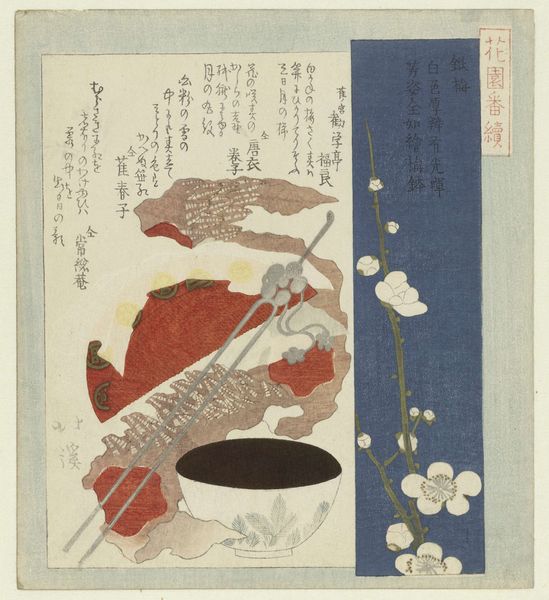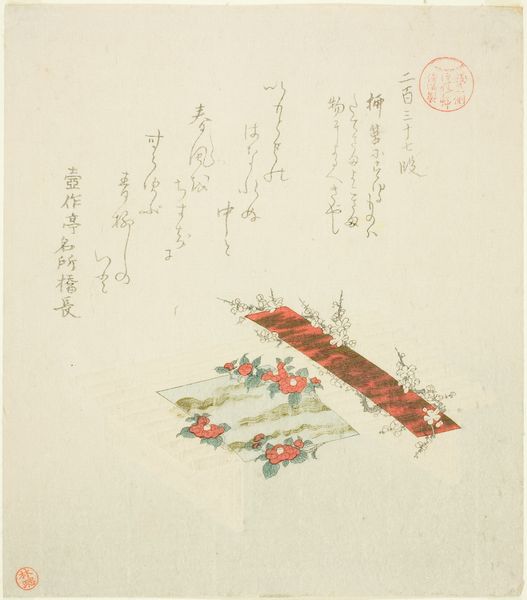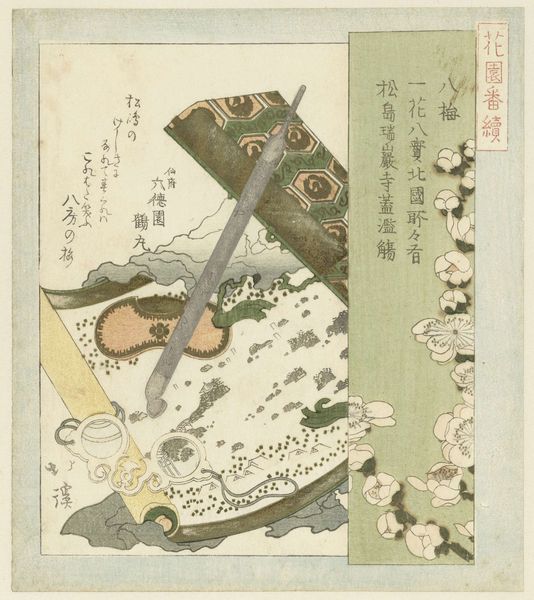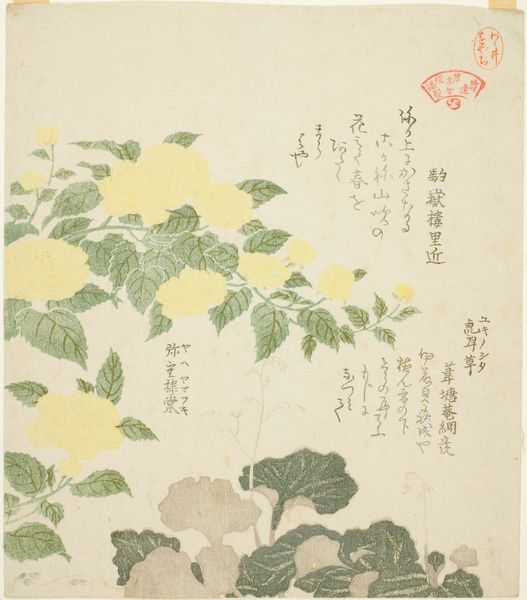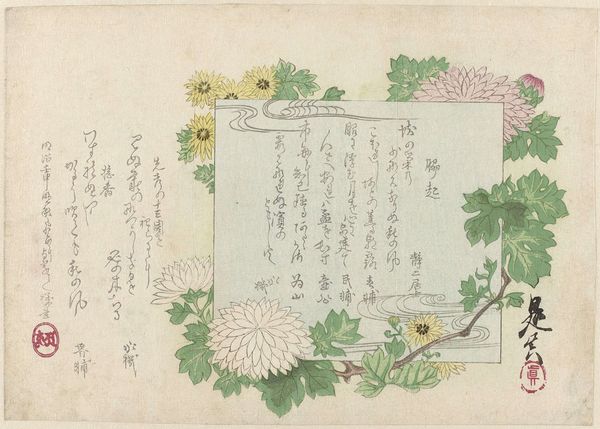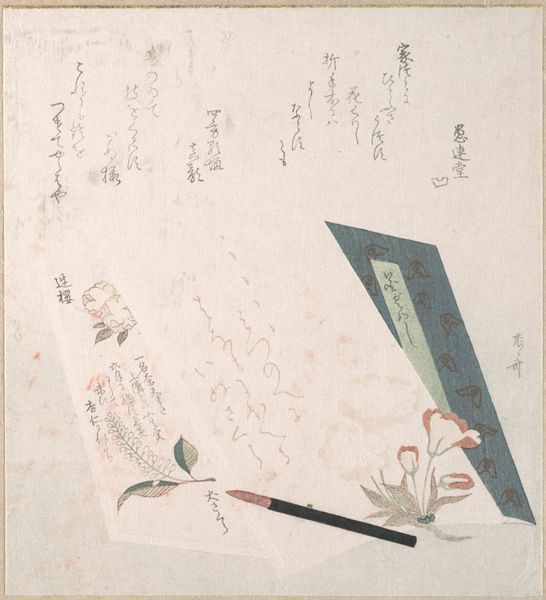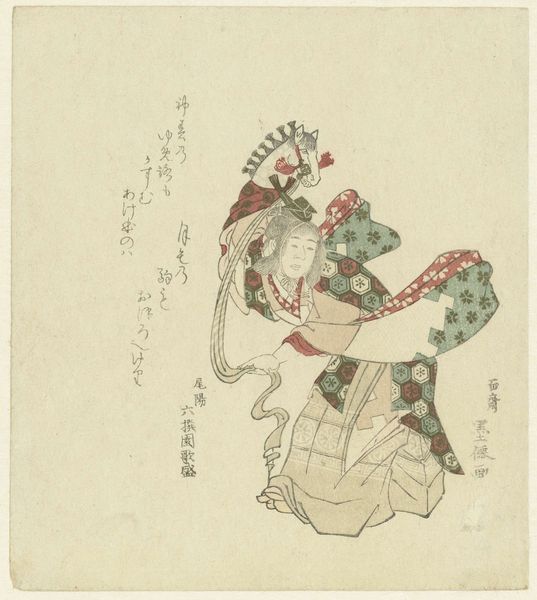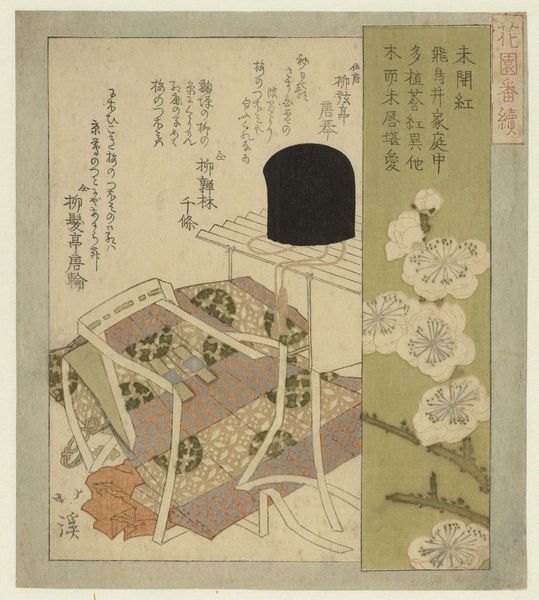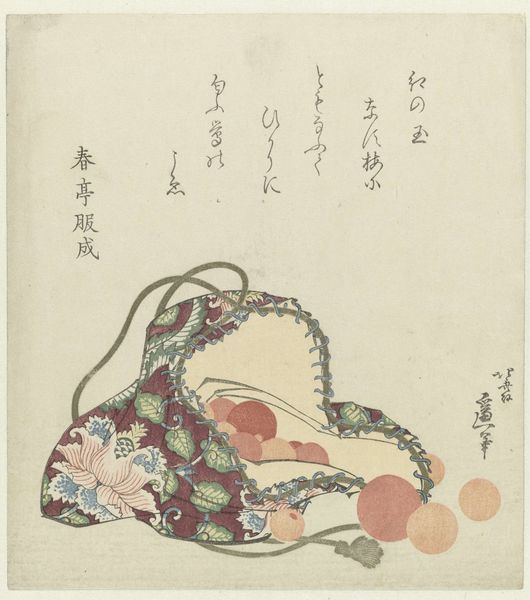
print, woodblock-print
#
portrait
# print
#
asian-art
#
ukiyo-e
#
linocut print
#
woodblock-print
#
watercolour illustration
Dimensions: height 207 mm, width 183 mm
Copyright: Rijks Museum: Open Domain
Curator: Let’s discuss "Votief-tafeltjes met bloemen," or "Votive Tablets with Flowers," a woodblock print created around 1822 by the renowned Japanese artist Katsushika Hokusai. What's your first impression? Editor: It's strangely serene. Despite the assortment of objects depicted, the composition is remarkably balanced. The textures—the smooth surfaces of the tablets, the soft fabric of the pouches—they really invite tactile contemplation. Curator: That’s insightful. This work speaks volumes about Edo-period Japanese culture. The votive tablets, or "ema," were typically left at Shinto shrines or Buddhist temples as offerings and requests. The cherry blossoms signal a particular time of year, associated with renewal and hope, but also the fleeting nature of life. Editor: Yes, there is a symbolic layering. Did folks actually design these tablets themselves? I see the intricate designs; there's something striking in their almost mathematical arrangement. The careful placement of the lettering suggests great thought and purpose. Curator: Absolutely! It’s fascinating to delve into the role of personal expression. The artist is referencing everyday societal needs and beliefs. The figure and other imagery relates to theatrical representations. Each person placing that ema would be asking for assistance or displaying thanks. Editor: I wonder if those small dots symbolize some kind of structured request or personal data in a manner reminiscent of, say, binary code today? Each one represents an intention. Even the way they lean diagonally adds dynamic movement. Curator: It very well could be; that semiotic analysis is helpful. They provide us insight into the individual and shared hopes and aspirations of those leaving the ema. It’s a visual representation of collective desires for healing, success, and wellbeing. Editor: I really appreciate this careful placement of these materials against a seemingly blank space to focus the mind on their significance, emphasizing the relationship among color, line, and form. Curator: Examining this work offers a compelling insight into a very personal form of agency. The ema encapsulates individual aspirations woven into a collective cultural practice. Editor: It truly illustrates how material culture and faith were very intricately related. This work shows Hokusai's skill for combining simple forms into something quite emotionally powerful.
Comments
No comments
Be the first to comment and join the conversation on the ultimate creative platform.

